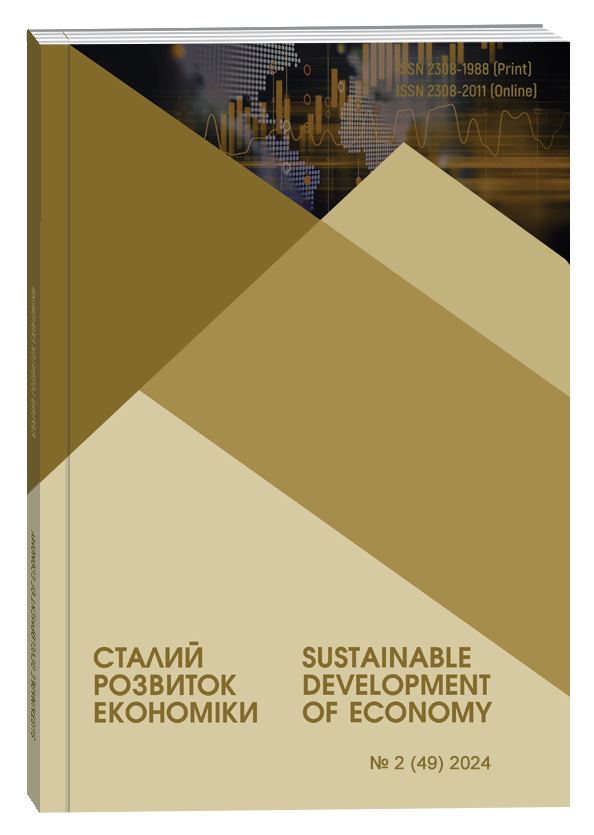MECHANISM OF IMPLEMENTATION OF DEBT POLICY OF TERRITORIAL COMMUNITIES
Abstract
The main goal of the research is to clarify the importance of implementing debt policy for the development of territorial communities. In reviewing scientific studies, approaches have been identified through which scholars have investigated the role of debt policy and its impact on the socio-economic development of communities. It has been established that among the main approaches of scholars regarding the role of debt policy are: economic approach, risk management approach, social approach, innovative approach, and environmental approach. A definition of the debt policy of territorial communities is provided, under which it should be understood as a set of strategies and measures that define the principles, conditions for attracting and using financial resources borrowed by local self-government bodies, as well as managing the formed debt obligations, aimed at effectively addressing territorial tasks and achieving socio-economic development at the local level. It has been found that the main goal of the debt policy of territorial communities is to ensure financial stability and development, promoting the effective use of debt resources to meet the needs of the community's population and support socio-economic growth, taking into account transparency, accountability, and long-term financial stability of the community. It has been clarified that the debt policy of territorial communities is a complex task that requires a targeted selection of mechanisms for its implementation. The mechanism for implementing debt policy is defined as a system of interconnected stages, strategies, and instruments aimed at attracting, managing, and using the debt resources of a territorial community. This mechanism includes defining the process of borrowing, choosing optimal financial instruments, risk management, monitoring, and reporting on the use of debt funds. It has been researched that the mechanism for implementing debt policy includes a complex of measures and elements aimed at attracting and managing debt resources. It is important to note that each of the elements of the mechanism for implementing debt policy operates autonomously but simultaneously is a component of the integral mechanism, and the interaction of these elements requires constant coordination of their functioning.
References
Altman R., Bordoff J., Furman J. and Rubin R. (2008) Path to Prosperity: An Economic Strategy to Achieve More Broadly Shared Growth, The Brookings Institution, Available at: https://www.hamiltonproject.org/wp-content/uploads/2023/01/Path_to_Prosperity.pdf
Shiller R. J. (2015) Irrational Exuberance. Princeton University Press, USA. Available at:https://www.researchgate.net/publication/305358091_Irrational_Exuberance_Revised_and_Expanded_Third_Editio
Galbraith J. ·(January/February 2023) The Debt Ceiling, Once More, with Feeling. Vol. 58, no 1.. Available at: https://www.intereconomics.eu/pdf-download/year/2023/number/1/article/the-debt-ceiling-once-more-with-feeling.html
Inman R. (January/February 2023) Transfers and Bailouts: Institutions for Enforcing Local Fiscal Discipline. Constitutional Political Economy, no. 12(2) pp. 141–160. Available at: https://www.researchgate.net/publication/226978191_Transfers_and_Bailouts_Institutions_for_Enforcing_Local_Fiscal_Discipline
Romer P., Bloom N., and other. (2013) A Trapped-Factors Model of Innovation. American Economic Review. American Economic Review. vol. 103(3). pp. 208–213. Available at: https://www.researchgate.net/publication/270638978_A_Trapped-Factors_Model_of_Innovation
Porter M and Kramer M. (2007) Strategy & Society The Link Between Competitive Advantage and Corporate Social Responsibility. Harvard Business Review. Available at: https://hazrevista.org/wp-content/uploads/strategy-society.pdf
Boyd J. (2002) Financial Responsibility for Environmental Obligations: Are Bonding and Assurance Rules Fulfilling Their Promise? 20 Research in Law and Economics. Available at: https://ideas.repec.org/p/rff/dpaper/dp-01-42.html
Nordhaus W. D. (2017) Evolution of Assessments of the Economics of Global Warming: Changes in the DICE model, 1992–2017. Climatic Change, vol. 148 (4), pp. 623–640.
Levitt А. (2022) Climate Change & Muni Bond Insurance. Available at: https://www.municipalbonds.com/bond-insurance/climate-change-and-muni-bond-insurance


